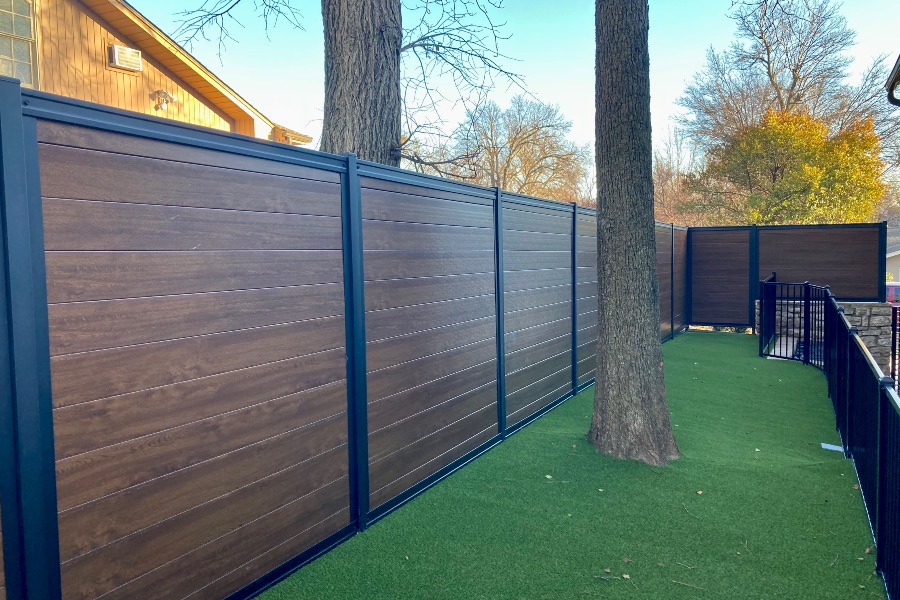All Categories
Featured

When preparing a brand-new fence for your building, it's very easy to concentrate on the standard costs-- products, setup, and labor. A number of covert expenses can dramatically influence your total budget. These added expenses often go undetected but can rapidly build up if you're not prepared. Below's a guide to several of one of the most usual covert costs to think about when budgeting for your fencing task.
- Permit Fees and Legal Requirements. Prior to you start digging, it is necessary to check if your location requires a license to mount a fence. Numerous districts have zoning legislations that regulate fencing height, product, and placement, specifically if you're developing near a home line or in a community with a Homeowners' Association (HOA) These regulations make sure the fence satisfies neighborhood requirements, however they also come with associated costs.
Expense range: $50 to $500, depending upon your area and the complexity of your job. 2. Fence Elimination and Disposal. , if you're replacing an existing fence, elimination and disposal of the old framework is an additional expenditure that can quickly be neglected.. Fence removal normally includes disassembling the old fencing, hauling away the materials, and disposing of them appropriately. Disposal fees can differ, especially if the old products require special handling, such as treated wood or steel.

Expense range: $2 to $10 per linear foot for removal and disposal, relying on the materials. 3. Land Prep Work and Excavation. A flawlessly level installation website is not constantly assured. If the land where your fence is being installed is uneven, rocky, or covered in plant life, it might need to be gotten rid of or leveled. Grading or excavation costs can include to your total project expenses, especially if you're setting up blog posts in hard-to-dig dirt. Inclines or compacted dirt may call for customized tools and more labor.
Price variety: $300 to $2,000, depending on the site's problem. 4. Energy Line Recognition and Adjustments. Before digging, it's vital to ensure that no underground utilities, like water, gas, or electric lines, will be interrupted during the setup. Many professionals will get in touch with energy companies to note these lines, however there could be extra costs if changes are required to stay clear of harmful existing framework.
Cost range: $100 to $500, depending upon whether changes are necessary. 5. Customized Features and Upgrades. While your fundamental fencing might include common materials, you may want to include personalized features like gates, decorative panels, or incorporated lighting. Automatic entrances or security systems are particularly pricey and require professional installment. Adding these extras enhances the overall expense of your fence, so make certain to factor them right into your budget plan.

Cost array: $100 to $1,500+ for features or entrances, depending upon size and complexity. 6. Distribution and Transportation Costs. Depending upon where your products are sourced, you might be charged a separate shipment cost for delivering the fencing products to your building. This is especially typical with big or hefty orders, such as timber panels or metal secure fencing. Shipment costs can likewise vary based on the distance between the supplier and your place.
Expense variety: $50 to $300 for distribution, depending on range and the amount of products. 7. Maintenance Expenses In Time. Numerous kinds of fences, specifically wood fences, require ongoing maintenance to remain in great condition. Regular tasks like staining, sealing, and cleansing will certainly assist prolong the life of your fencing. Some materials, such as vinyl or steel, might be much more low-maintenance yet can still incur expenses for repairs or replacements if harmed.
Yearly cost array: $50 to $300 for upkeep, relying on material and environment. 8. Weather Delays. Mommy Nature does not constantly accept your timeline. If your setup is delayed by bad climate, such as rainfall or severe heat, you might deal with extra labor costs if employees need to go back to finish the project at a later time. Delays can likewise extend the project timeline, pushing back when the fence awaits use.
Cost array: Variable, relying on for how long the hold-up lasts. 9. Residential Property Line Disputes. Installing a fence near to your residential property line can occasionally bring about conflicts with next-door neighbors. It may be required to hire a specialist property surveyor to verify the property line before setup if your border is vague. This extra step ensures you will not accidentally intrude on your neighbor's land, but it comes with included prices.
Cost array: $400 to $1,000 for a property survey, relying on your place. 10. Dirt and Ground Conditions. Specific soil kinds can offer difficulties during installation. If your home has rough, compressed, or clay-based dirt, digging holes for messages can be a lot more challenging, calling for customized equipment or more time to complete. Harder ground conditions may additionally necessitate using concrete or various other strengthening materials for added security.
Price array: $100 to $500 for devices or added labor. Conclusion. Permits, site preparation, old fence elimination, utility modifications, and personalized attributes can all include up. By accounting for these concealed expenses, you can ensure that your fencing project remains within budget and is finished without unanticipated economic shocks.
Latest Posts
Uncover Montclare Auto Repair’s Leading Auto Repairs and Why Drivers Rely On Them
Published May 31, 25
1 min read
Explore Premier Auto Repair Services in Chicago – Keep Your Car Running Smoothly
Published May 27, 25
1 min read
Find Cost-Effective Auto Repairs with Montclare’s Limited-Time Service Specials
Published May 22, 25
1 min read
More
Latest Posts
Uncover Montclare Auto Repair’s Leading Auto Repairs and Why Drivers Rely On Them
Published May 31, 25
1 min read
Explore Premier Auto Repair Services in Chicago – Keep Your Car Running Smoothly
Published May 27, 25
1 min read
Find Cost-Effective Auto Repairs with Montclare’s Limited-Time Service Specials
Published May 22, 25
1 min read